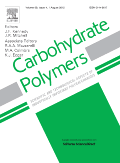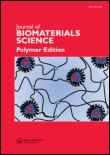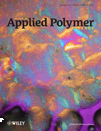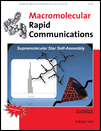
Carbohydrate Polymers
Scope & Guideline
Unveiling the potential of carbohydrate polymers.
Introduction
Aims and Scopes
- Polysaccharide Synthesis and Modification:
Research focused on innovative methods for synthesizing and modifying polysaccharides, including enzymatic, chemical, and physical approaches. This area highlights the development of novel polysaccharide derivatives with tailored properties for specific applications. - Biocompatibility and Biomedical Applications:
Studies exploring the biocompatibility of carbohydrate-based materials, particularly in drug delivery systems, wound healing, and tissue engineering. Emphasis is placed on the interaction of these materials with biological systems and their therapeutic potentials. - Functional Properties of Carbohydrates:
Investigations into the functional properties of polysaccharides, including their rheological, mechanical, and thermal behaviors. This research is crucial for understanding how these materials can be utilized in various applications from food products to biomedical devices. - Sustainable Materials and Environmental Applications:
Research dedicated to the development of sustainable carbohydrate-based materials, including biodegradable films and adsorbents for environmental remediation. This area emphasizes the importance of utilizing renewable resources for creating eco-friendly products. - Polysaccharide-Based Nanotechnology:
Exploration of nanotechnology applications involving polysaccharides, such as the creation of nanocarriers for drug delivery, nanocomposites for enhanced material properties, and the development of smart materials that respond to external stimuli.
Trending and Emerging
- Smart and Responsive Hydrogels:
There is a notable increase in research on smart hydrogels that respond to environmental stimuli such as pH, temperature, and light. These materials are being developed for a variety of applications, including drug delivery and wound healing, reflecting the demand for advanced biomaterials. - Polysaccharides in Drug Delivery Systems:
An emerging trend is the incorporation of polysaccharides into drug delivery systems, particularly for targeted and controlled release applications. This includes the use of polysaccharide-based nanoparticles and hydrogels designed to enhance the efficacy and reduce side effects of therapeutics. - Sustainable and Biodegradable Materials:
Research focused on the development of sustainable, biodegradable materials derived from polysaccharides is on the rise. This aligns with global efforts to reduce plastic waste and promote environmentally friendly alternatives in packaging and other industries. - Functional Food Ingredients:
The exploration of polysaccharides as functional food ingredients, particularly those with prebiotic properties, has gained popularity. Research is increasingly focusing on the health benefits of dietary fibers and their role in gut health. - Nanocellulose Applications:
The applications of nanocellulose in various fields, including electronics, sensors, and biomedical devices, are rapidly expanding. This trend reflects the versatility and potential of nanocellulose as a sustainable material for innovative technologies.
Declining or Waning
- Traditional Food Applications:
Research centered around traditional food applications of carbohydrates, such as gelatinization and emulsification, has seen a decline. This may be due to the increasing interest in novel applications and functional ingredients that offer enhanced health benefits. - Basic Structural Studies of Polysaccharides:
There appears to be a waning interest in purely structural studies of polysaccharides without direct application. As the field evolves, researchers are more focused on the functional implications of structural characteristics rather than the structures themselves. - Isolated Polysaccharide Studies:
The focus on isolated studies of single polysaccharides has diminished, as more researchers are now investigating complex polysaccharide mixtures and their synergistic effects, reflecting a shift towards understanding interactions in natural systems.
Similar Journals

JOURNAL OF BIOMATERIALS SCIENCE-POLYMER EDITION
Pioneering research in polymer-based solutions for biomedicine.JOURNAL OF BIOMATERIALS SCIENCE-POLYMER EDITION, published by Taylor & Francis Ltd, is a distinguished scholarly journal dedicated to the exploration of biomaterials and their applications in various fields such as bioengineering, biomedical engineering, and biophysics. With an ISSN of 0920-5063 and an E-ISSN of 1568-5624, this journal offers a platform for researchers and professionals to share innovative findings and methodologies that advance the science of polymer-based biomaterials. The journal's impact within the academic community is underscored by its notable Scopus rankings, including a Q2 status in both Biomedical Engineering and Biophysics as of 2023, reflecting its significant contribution to advancing knowledge and practice in these fields. The scope of the journal spans from fundamental research to applications in medical devices and regenerative medicine, ensuring comprehensive coverage of the latest trends and breakthroughs. Although it does not currently offer open access options, the journal remains a pivotal resource for students, researchers, and professionals committed to the development and application of biomaterials in healthcare. For further details, the journal is based in Abingdon, United Kingdom, at 2-4 Park Square, Milton Park, OX14 4RN.

MOLECULES
Pioneering Open Access Solutions for Chemistry EnthusiastsMOLECULES, published by MDPI, stands as a prominent open-access journal dedicated to the field of chemistry, with an exceptional reputation in various sub-disciplines. Since its inception in 1997, this journal has committed itself to the dissemination of innovative research, spanning topics in Analytical Chemistry, Organic Chemistry, Pharmaceutical Science, and Drug Discovery. With impressive rankings across Scopus categories—including a coveted Q1 designation in both Analytical Chemistry and Pharmaceutical Science—MOLECULES is recognized as a vital resource for researchers, professionals, and students aiming to stay at the forefront of scientific development. The journal’s data reflect its wide-ranging influence, holding high percentiles in multiple chemistry categories, thereby ensuring that its articles reach a significant audience. As an open-access journal, it provides unparalleled access to its content, available freely and globally, which promotes further advancement and collaboration within the scientific community. Its ongoing commitment to high-quality research from 1996 to 2024 reinforces its status as a leader in the academic publishing landscape.

ADVANCES IN POLYMER TECHNOLOGY
Exploring New Frontiers in Polymer Engineering.ADVANCES IN POLYMER TECHNOLOGY is a premier open-access journal that has been at the forefront of innovation in the field of polymer science and engineering since its inception in 1981. Published by WILEY-HINDAWI, this journal serves as a vital platform for researchers, professionals, and students alike, facilitating the dissemination of cutting-edge research and applications in chemical engineering, organic chemistry, and polymers and plastics. With an impact factor that signifies its relevance and quality, the journal has achieved notable rankings, including Q2 in Chemical Engineering, and ranks within the top 30% of its category in multiple disciplines as of 2023. ADVANCES IN POLYMER TECHNOLOGY has embraced open-access publishing since 2019, ensuring that research findings are widely available to the global academic community. With its comprehensive coverage of topics related to polymer technology, this journal not only fosters scholarly exchange but also aims to bridge the gap between fundamental research and practical applications, thereby contributing significantly to advancements in materials science.

JOURNAL OF APPLIED POLYMER SCIENCE
Exploring the Science Behind Everyday PolymersThe Journal of Applied Polymer Science, published by Wiley, is a leading journal in the field of polymer science, showcasing innovative research and applications in various domains since its inception in 1959. With an ISSN of 0021-8995 and an E-ISSN of 1097-4628, it is indexed in prominent databases, maintaining a strong presence with Scopus rankings placing it in the Q2 category across multiple disciplines, including Chemistry, Materials Chemistry, and Polymers and Plastics. The journal’s commitment to advancing scientific knowledge is reflected in its impact on the materials science community, with noteworthy rankings such as #38 in Surfaces, Coatings and Films and #51 in Polymers and Plastics. Though not an open-access publication, it remains a vital resource for researchers, professionals, and students aiming to deepen their understanding of polymer applications and to stay abreast of the latest developments in this ever-evolving field. With a focus on high-quality research, the Journal of Applied Polymer Science continues to be a cornerstone for those engaged in polymer research and its myriad applications.

JOURNAL OF POLYMER MATERIALS
Bridging Theory and Application in Polymer ScienceJOURNAL OF POLYMER MATERIALS, published by PRINTS PUBLICATIONS PVT LTD, is a pivotal platform within the field of materials science, focusing particularly on polymer and plastics research. Established in 1987, this journal has played a crucial role in disseminating innovative findings and advances in polymer materials, catering to a diverse readership of researchers, professionals, and students alike. Despite a break in Scopus coverage, it continues to contribute valuable insights into materials chemistry, reflected in its rankings within the lower quartile in related categories. With an ISSN of 0973-8622, the journal seeks to foster a greater understanding of polymer science and applications. Researchers are encouraged to submit their findings to a journal that aims to bridge the gap between theoretical research and practical application. While currently not offering open access, readers can benefit from the journal's commitment to scholarly excellence. Located in New Delhi, India, the JOURNAL OF POLYMER MATERIALS remains a significant resource for those passionate about polymeric materials and their extensive applications.

MACROMOLECULAR RESEARCH
Unlocking the Potential of Polymers WorldwideMACROMOLECULAR RESEARCH, published by the POLYMER SOC KOREA, is a premier journal dedicated to advancing the field of macromolecular science and polymer engineering. With its ISSN 1598-5032 and E-ISSN 2092-7673, this journal has emerged as a vital platform for researchers and professionals interested in the application and development of polymers across various domains. Based in South Korea and operating as an open-access resource since its inception in 2002, MACROMOLECULAR RESEARCH consistently ranks in the Q2 category across diverse fields such as Chemical Engineering, Materials Chemistry, and Organic Chemistry as per the latest 2023 metrics. Notably, it is recognized for its substantial contributions to polymery science, increasing its visibility and impact in global research. By providing a forum for original research articles, reviews, and innovative methodologies, this journal aims to foster collaboration and knowledge sharing among scientists, engineers, and students alike. Join a community that is at the forefront of polymer research by exploring the wealth of resources and cutting-edge studies featured in MACROMOLECULAR RESEARCH.

Inorganic and Nano-Metal Chemistry
Empowering Researchers with Open Access to Cutting-Edge Chemistry.Inorganic and Nano-Metal Chemistry is a premier journal published by Taylor & Francis Inc, focusing on innovative research and advancements in the fields of inorganic chemistry and nano-metal applications. With an increasing impact in the academic community, this journal has established itself within the Q3 category of both Inorganic Chemistry and Physical and Theoretical Chemistry as of 2023, reflecting its global recognition and influence. The journal is accessible as an Open Access publication, ensuring that research findings are freely available to a broad audience, promoting transparency and collaboration in scientific exploration. Based in the United Kingdom, Inorganic and Nano-Metal Chemistry aims to disseminate high-quality peer-reviewed articles that not only highlight fundamental studies but also push the boundaries of technological applications in areas such as catalysis, materials science, and nanotechnology. Researchers, professionals, and students will find this journal an invaluable resource for the latest developments and interdisciplinary insights in the ever-evolving landscape of inorganic and nano-metal chemistry.

GIANT
Empowering Researchers through Accessible Knowledge.GIANT is a pioneering open-access journal published by Elsevier that has rapidly established itself as a cornerstone in the fields of Chemistry, Materials Chemistry, Polymers and Plastics, and Surfaces, Coatings and Films. Since its inception in 2020, GIANT has been committed to disseminating cutting-edge research and facilitating scholarly communication in these dynamic areas. With a remarkable Q1 ranking across multiple categories, the journal reflects an impressive impact factor within the academic community, evidenced by its standing in the top 82nd percentile in several Scopus classifications. Based in the Netherlands at Radarweg 29, Amsterdam, GIANT embraces a global audience through its open-access model, ensuring that groundbreaking discoveries are accessible to researchers, professionals, and students alike. Fostering innovation, the journal strives to shape the future of materials science and chemistry, making significant contributions in an era characterized by rapid scientific advancement.

Polymer-Plastics Technology and Materials
Unlocking the Potential of Polymer and PlasticsPolymer-Plastics Technology and Materials is a premier academic journal published by Taylor & Francis Inc., dedicated to the dynamic fields of chemical engineering, materials chemistry, and polymers and plastics. With an impact factor that reinforces its reputation, this journal is strategically indexed in Scopus, ranked notably within its categories (Q2), showcasing its influence and relevance in the academic community. Since its inception in 2019, the journal has served as an essential platform for researchers, professionals, and students to disseminate innovative studies and advancements in polymer science and materials technology. As an Open Access publication, it ensures that cutting-edge research is accessible to a global audience, fostering collaboration and knowledge sharing in the material sciences. Located in the United Kingdom, Polymer-Plastics Technology and Materials continues to enhance the dialogue within the industry, addressing critical challenges and exploring emerging trends that shape the future of polymer and plastics technologies.

MACROMOLECULAR RAPID COMMUNICATIONS
Unleashing Innovation in Polymers and PlasticsMACROMOLECULAR RAPID COMMUNICATIONS, published by WILEY-V C H VERLAG GMBH in Germany, is an esteemed journal dedicated to the rapid dissemination of high-quality research in the fields of materials chemistry, organic chemistry, and polymers and plastics. With a remarkable 2023 impact factor securing its place in the prestigious Q1 category across three key disciplines, the journal ranks impressively within the top quartiles of the Scopus metrics, standing at 36th in organic chemistry and 35th in polymers and plastics. Although the journal does not offer open access options, its informative depth and innovative research make it an invaluable resource for researchers, professionals, and students seeking to stay abreast of the latest developments in macromolecular science. Covering a broad spectrum of topics from fundamental research to applications, MACROMOLECULAR RAPID COMMUNICATIONS aims to foster collaboration and inspire further advancements within the scientific community.